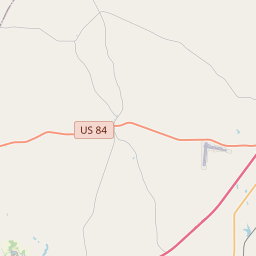Historic and Beautiful Repton
Historical marker location:
Repton, Alabama
( Marker is on Alabama Route 41, 0.1 miles south of U.S. 84, on the right when traveling north.)
Marker installed: 2010







© OpenStreetMap contributors
Loading...
Searching for other points of interest within 3 miles of this location.The first European settlement in Alabama was established in 1702 by the French at Fort Louis de la Mobile, which is now the city of Mobile. It was named after Louis XIV of France and was the capital of French Louisiana until 1711.
About Conecuh County
Conecuh County Timeline
Conecuh County, located in southern Alabama, has a rich history dating back to its establishment in 1818. The area was originally home to Creek Indians, but European settlers began to arrive in the early 1800s. The county was named after the Conecuh River, which flows through its eastern part. The river played a significant role in the county's early development, providing transportation and a source of water for settlers.
During the mid-19th century, Conecuh County's economy flourished with the cultivation of its fertile land. The county became known for its successful cotton plantations, which relied heavily on slave labor. However, the outbreak of the American Civil War in 1861 disrupted the county's prosperity, causing significant damage and loss of life.
In the years following the war, Conecuh County struggled to recover. The county faced economic challenges, including the transition from a reliance on agricultural labor to a more diversified economy. Small farming operations and the timber industry became prominent, providing employment opportunities for the community.
In the 20th century, Conecuh County experienced ups and downs as it adapted to shifting economic realities. The Great Depression brought hardship to the county, but in the following decades, the construction of major highways brought new opportunities for growth and development. Today, Conecuh County continues to build on its rich history while embracing progress and pursuing economic stability.
During the mid-19th century, Conecuh County's economy flourished with the cultivation of its fertile land. The county became known for its successful cotton plantations, which relied heavily on slave labor. However, the outbreak of the American Civil War in 1861 disrupted the county's prosperity, causing significant damage and loss of life.
In the years following the war, Conecuh County struggled to recover. The county faced economic challenges, including the transition from a reliance on agricultural labor to a more diversified economy. Small farming operations and the timber industry became prominent, providing employment opportunities for the community.
In the 20th century, Conecuh County experienced ups and downs as it adapted to shifting economic realities. The Great Depression brought hardship to the county, but in the following decades, the construction of major highways brought new opportunities for growth and development. Today, Conecuh County continues to build on its rich history while embracing progress and pursuing economic stability.
Conecuh County Timeline
This timeline provides a concise overview of the key events in the history of Conecuh County, Alabama.
- 1818: Conecuh County is established by an act of the Alabama State Legislature.
- 1820s: The county experiences rapid settlement as pioneers, mainly from Georgia and South Carolina, move into the area.
- 1830: The county seat is established in Evergreen, which becomes the central hub of government and commerce.
- 1860s: Conecuh County, like much of the South, is ravaged by the Civil War, resulting in economic devastation and loss of life.
- Late 19th century: Following the Reconstruction era, the county begins to recover with the growth of timber and agriculture industries.
- Early 20th century: The county experiences an economic boom due to the establishment of sawmills and the timber industry.
- 1920s: Conecuh County becomes known as the "Wilderness Wonderland" and attracts visitors with its natural beauty and outdoor recreational opportunities.
- 1950s: The county's economy diversifies with the introduction of poultry farming as a major industry.
- 1980s-1990s: Conecuh County faces challenges, including a decline in timber and poultry industries, leading to population loss and economic struggles.
- Present-day: Conecuh County continues to adapt and develop, focusing on tourism, agriculture, and small-scale industries to drive its economy.